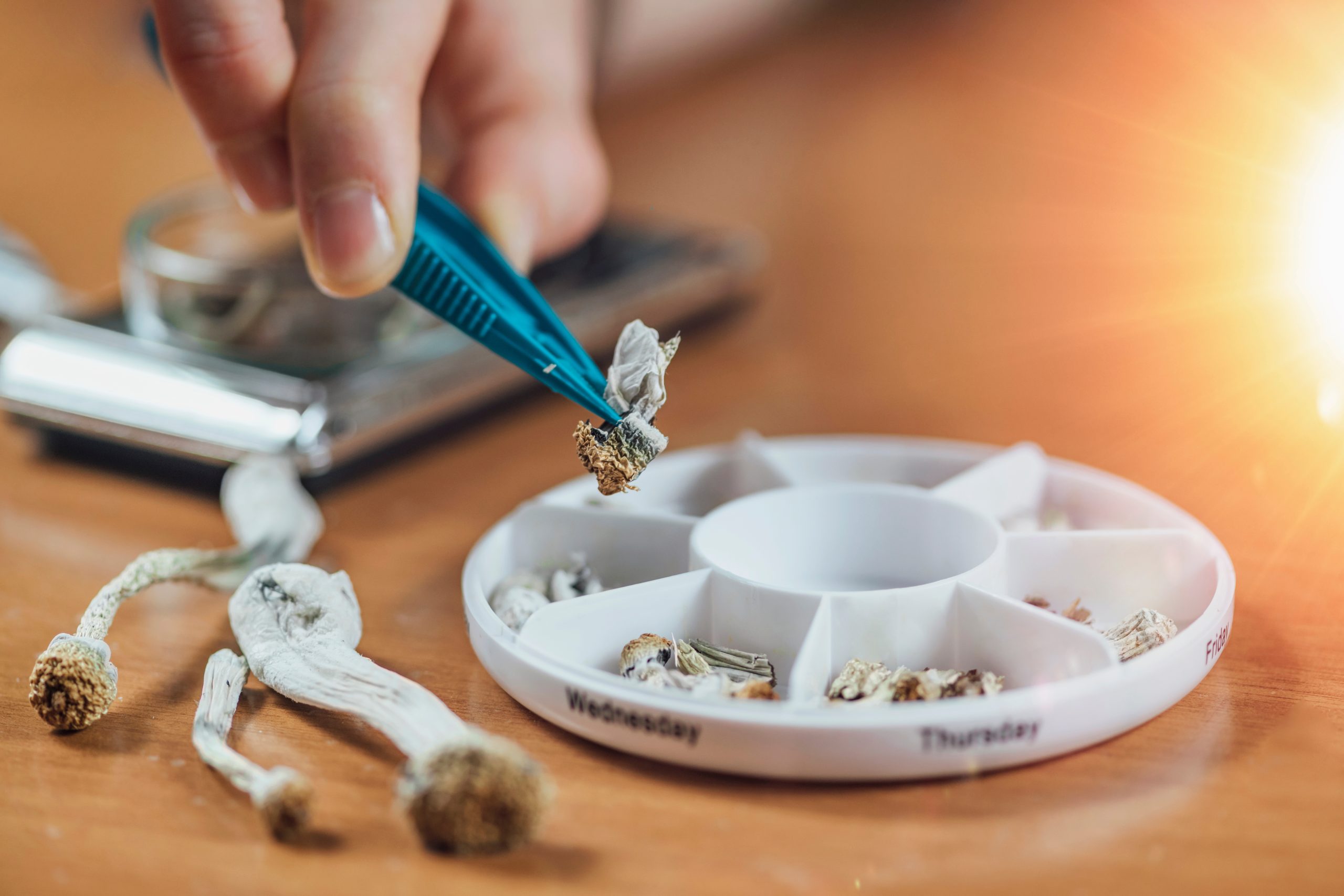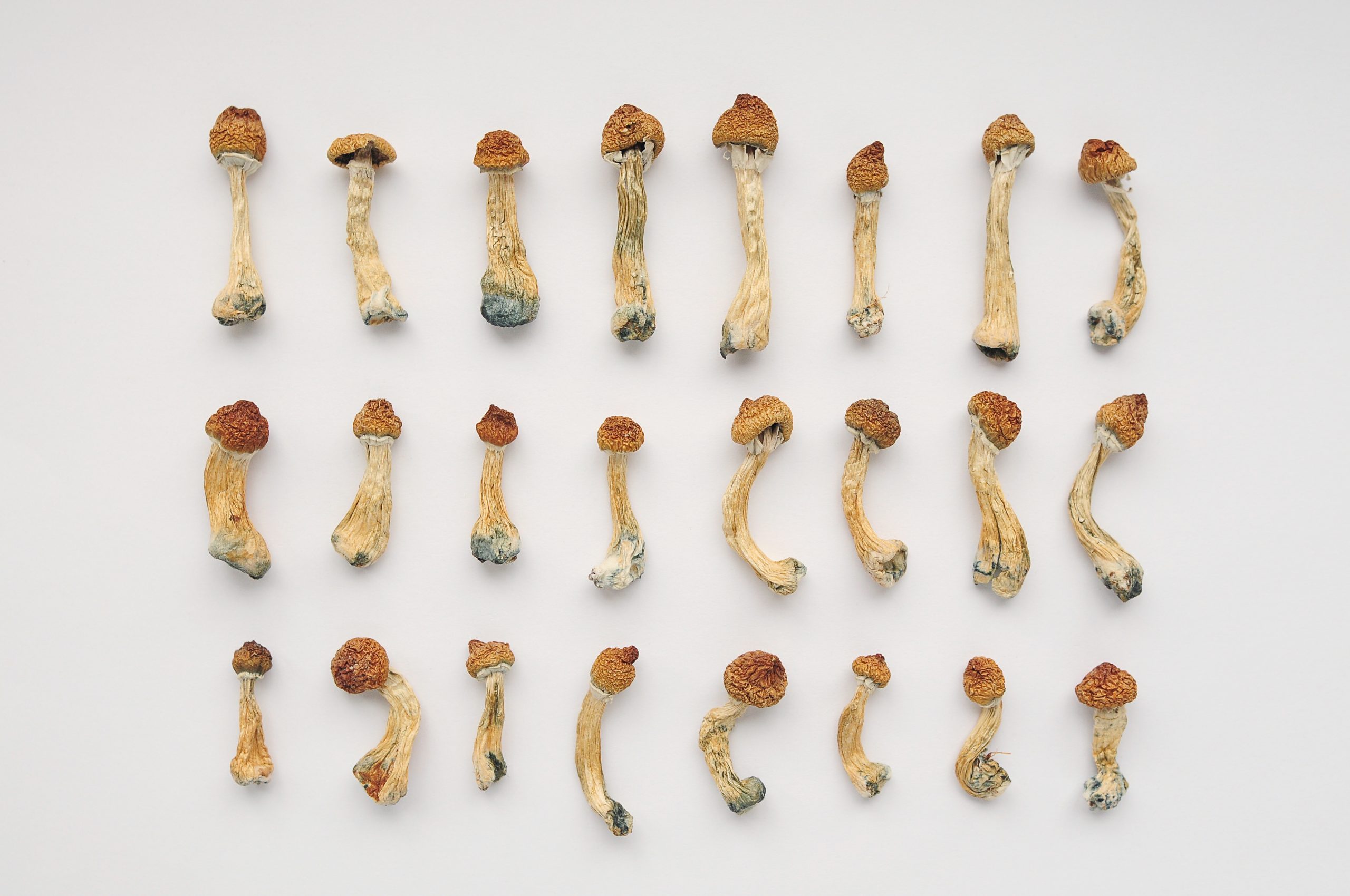More people are looking beyond prescriptions and quick fixes to support their mental well-being. For many, microdosing psilocybin has become a grounded, intentional way to feel lighter, calmer, and more connected without altering reality or “tripping.” It gives your brain a gentle nudge in a healthier direction.
Microdosing can feel intimidating when you’re just starting out. How much do you take? How often? What should you expect? And how do you do it responsibly and legally? This guide breaks down the basics so you can begin from a place of clarity instead of guesswork.
We’ll walk you through what microdosing actually is and how to approach the practice with intention and respect.

What Microdosing Psilocybin Actually Means
Microdosing means taking a very small, non-intoxicating amount of psilocybin, usually about one-tenth of what someone might take for a full psychedelic experience. The goal is not to hallucinate or feel “high,” but to create subtle shifts that support daily life.
For most people, a microdose falls in the range of 0.1-0.3 grams of dried psilocybin mushrooms. At that level, you shouldn’t see visuals or feel out of control; you may simply notice a lighter mood, more openness, or an easier time staying present.
People microdose with different intentions, but the most common include:
- Mood support — easing symptoms of depression or emotional heaviness
- Reduced anxiety — feeling more regulated and less reactive, quieter mind
- Improved focus — better attention, flow, or productivity
- Emotional balance — less rumination, more flexibility in thinking
- Creative clarity — easier access to ideas or problem solving
Microdosing gently works with your brain in a way that may make daily life more manageable, more creative, and more emotionally grounded.
What the Science and the People Say
Psilocybin interacts with the brain’s serotonin system, especially the 5-HT2A receptors that influence mood, perception, and emotional processing. By engaging these receptors, psilocybin can temporarily “reset” disrupted brain patterns that often show up in depression and anxiety, particularly the rigid, repetitive loops of negative thinking.
Early research has shown encouraging results:
- Depression and anxiety: Several studies report reduced symptoms and improved emotional regulation after consistent, low-dose use.
- Cognitive flexibility: Research in psychopharmacology suggests psilocybin may help the brain shift perspectives more easily. This is a key challenge for people stuck in depressive thought cycles.
- Mood and resilience: A 2021 Nature Scientific Reports paper found microdosers reported higher mood, less anxiety, and better stress tolerance.
These findings align with what many people describe anecdotally. They feel calmer, more open, less reactive, and better able to move through stress without spiraling.
For now, the best understanding is that microdosing psilocybin may support mental and emotional wellbeing for some people when practiced thoroughly, but it works as a part of a broader wellness approach.
Finding Your Starting Point
When it comes to microdosing, the safest and most effective approach is simple: start low and go slow. Begin at the smallest end of the range (between 0.05g- 0.1g) and give your body time to respond before making any adjustments. You’re looking for subtle shifts, not obvious psychoactive effects.
Reflect at the end of the day and measure benefits. What was different in how you responded to yourself and others that day? If you did not notice a difference, increase the dose by another 0.05g-0.1g the next day and microdose again. Continue this path until you have found a dose that provides a noticeable benefit.
Your body does not develop a tolerance to microdosing psilocybin so you can dose every day. If you determine you would prefer to skip a day here and there, give yourself permission to do so. Listen to your body and pay attention to what you are noticing. Microdosing works best when you pair it with a supportive mindset and a clear reason for why you’re doing it. Since changes are gradual, consistency matters far more than intensity.
As you are giving your brain the microdose it needs, you will find that how you perceive things will start to shift. Consider getting involved with a group such as the therapeutic microdosing groups hosted throughout every month by Grow Your Own Thoughts. Dates, times, and zoom links for group participation can be found on the calendar at the bottom of the homepage.
These discussions provide opportunities to ask questions about dosing and to share in discussion about what is shifting in your life as your brain neuroplasticity is enhanced.

Best Practices for Microdosing with Intention
To learn what actually works for your brain and body, you need to treat microdosing like a mindful practice rather than a casual experiment. A few grounding habits can make a big difference:
- Track what you notice. Use a journal or notes app to log your dose, mood, focus, sleep, and stress levels. The patterns will teach you more than any single day. A helpful resource that includes a 6-week tracking and reflection manual for microdosing is “Grow Your Own Thoughts: Microdosing With Purpose.”
- Pair it with supportive habits. Microdosing often works best alongside other stabilizers like therapy, breathwork, meditation, exercise, or structured sleep.
- Avoid common pitfalls. Don’t chase a “feeling” by increasing the dose, mixing with other substances to intensify results, or expecting instant transformation. Remember, microdosing is not about what you ‘feel’ it is about what you ‘notice.’ A change in perspective may lead to more positive feelings, but focus on your perspective shifts, not emotions.
- Acquire supplements from a trusted source. You are ingesting the mushrooms into your body. Give consideration to your source whether you decide to get them ‘ready to use’ or cultivate your own. Pay attention to the medium that is used for cultivation, making sure it is free of pesticides and manure and consider the reputation of the company or individual you are acquiring from. Whether you are microdosing for mental or physical health benefits, or a bit of both, it helps to have informed and trusted sources alongside you. A therapeutic microdosing program contributes to a more legal, trustworthy, and helpful journey.
When you approach it with patience, structure, and intention, the benefits have room to show up clearly without forcing them.
Growing Your Own: Why Many People Choose Home Cultivation
For many microdosers, the journey extends beyond consuming and extends into growing their own mushrooms. Home cultivation offers practical and personal benefits: lower cost over time, reliable access, full control over quality, and a sense of sovereignty over what you put into your body. For some, the process itself becomes ritual. It’s a slow, hands-on practice of patience, care, and intention that mirrors the inner work microdosing supports.
Grow Your Own Thoughts kits make this process approachable even for beginners. You don’t need lab equipment or mycology experience. Our kits are designed to be simple, sustainable, and supportive, giving you everything you need to cultivate safely and confidently at home.
Growing your own can deepen your relationship with the medicine and yourself.
Gentle Relief Starts with Grow Your Own Thoughts
Microdosing can help you approach life with more clarity, flexibility, and steadiness. When practiced thoughtfully, it can help you build resilience from the inside out. The confidence to start comes from three things: good information, intentional habits, and consistent follow-through.
If you feel ready to take the next step in your journey, or simply want to learn more, explore our Grow Your Own Thoughts kits, therapeutic microdosing options, and educational resources. We’re here to make the process grounded, safe, and accessible, so you can move forward with confidence and care.
The contents of this blog are intended for informational purposes only. Always seek the advice of a physician or other qualified healthcare provider with any questions you may have regarding a medical condition.

